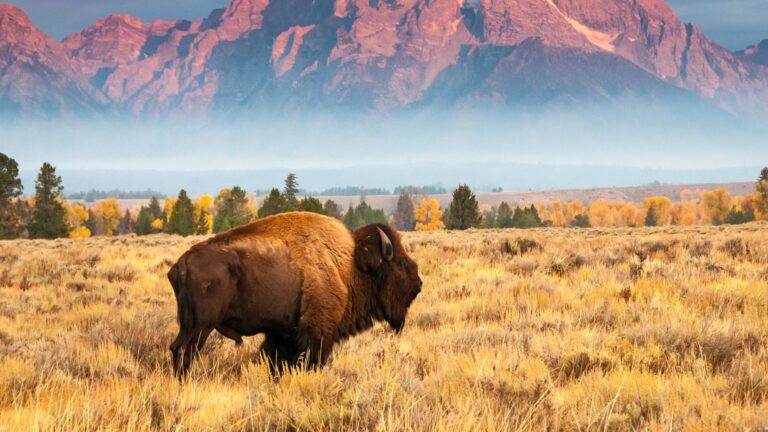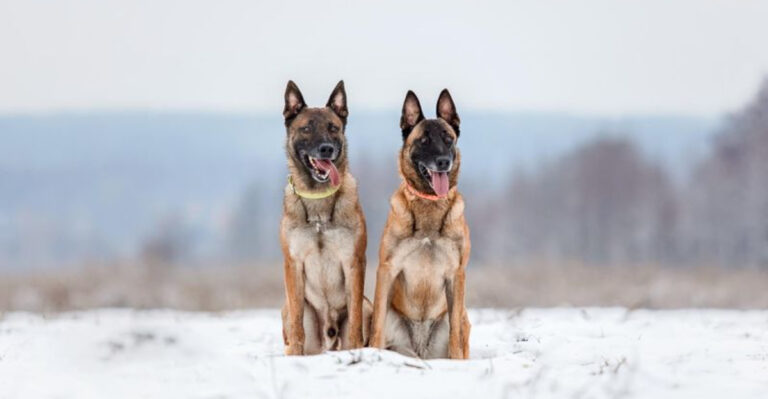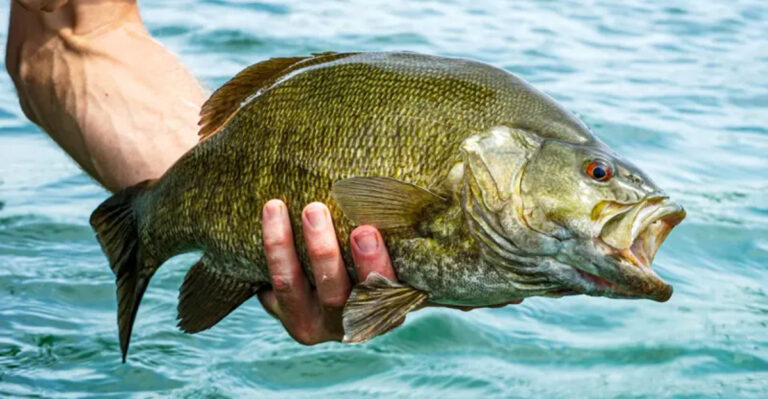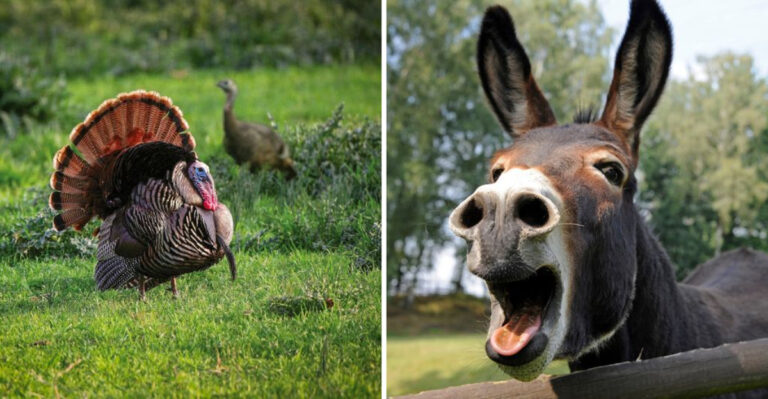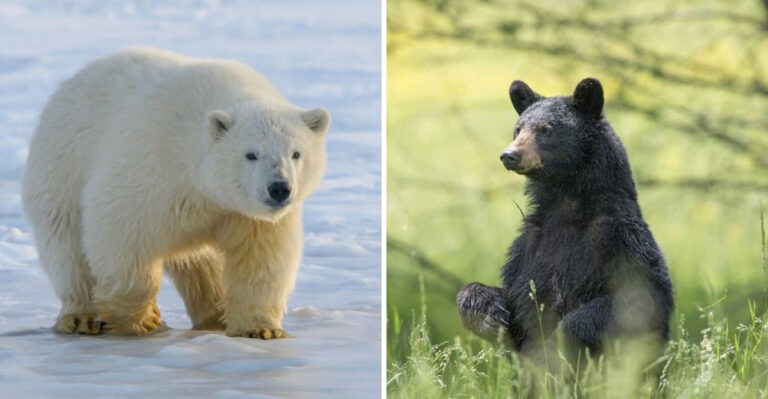15 Terrifying Extinct Creatures You’ll Be Grateful To Never Meet
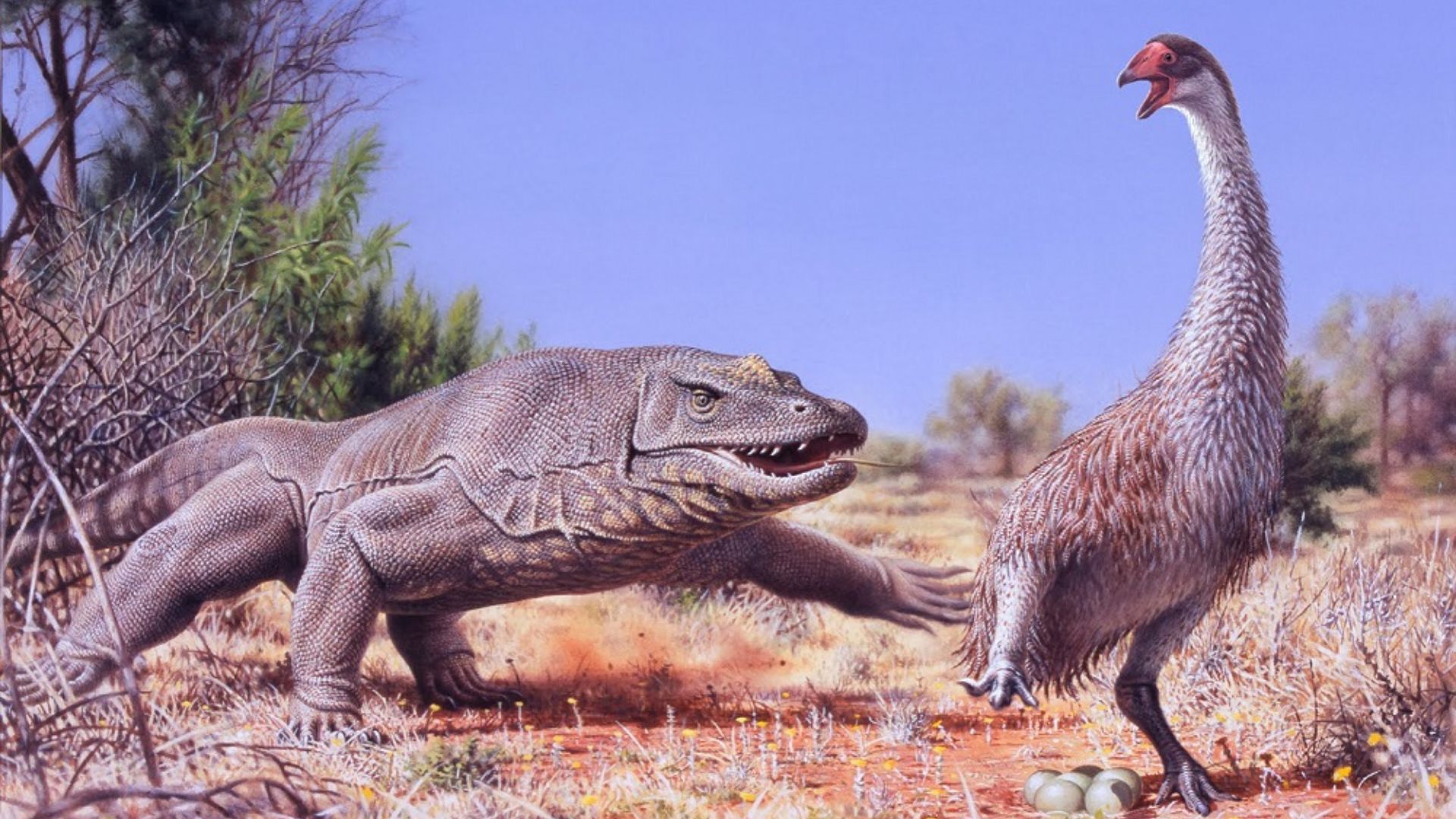
The ancient world was home to creatures that were not only massive but also incredibly dangerous.
These long-extinct predators and giants ruled their ecosystems with abilities and appearances that would strike fear into anyone today. Here’s a closer look at some of the most horrifying creatures that make us grateful they’re no longer around.
1. Megalodon
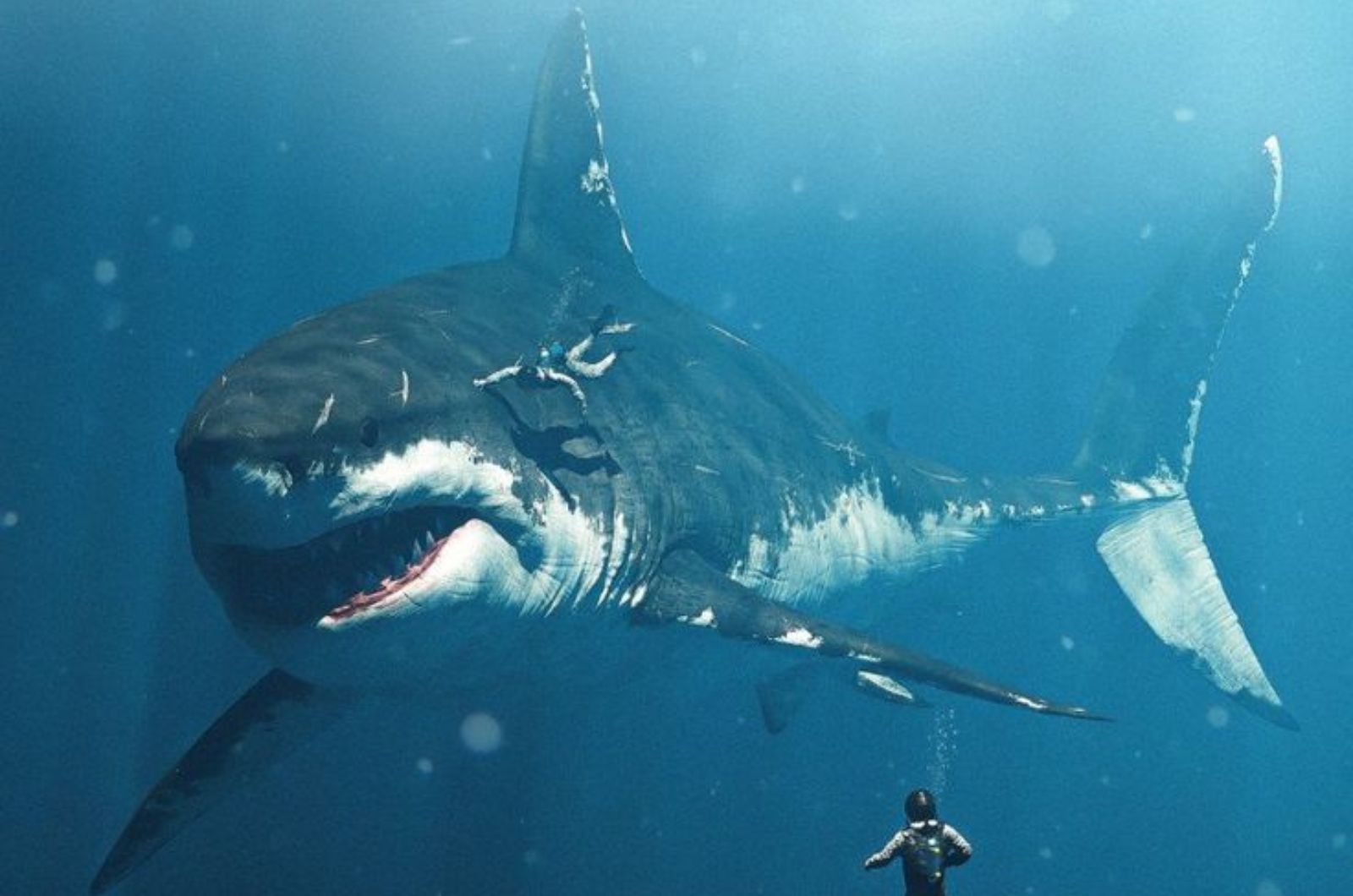
Megalodon was the ultimate predator of the prehistoric seas, dominating oceans around 3 million years ago. This shark could grow up to 60 feet long, with jaws strong enough to crush whale bones and teeth measuring over 7 inches.
Unlike modern sharks, Megalodon hunted large marine mammals, using its immense size and speed to ambush prey. If it were still alive today, swimming in the ocean would be a far riskier activity.
2. Titanoboa
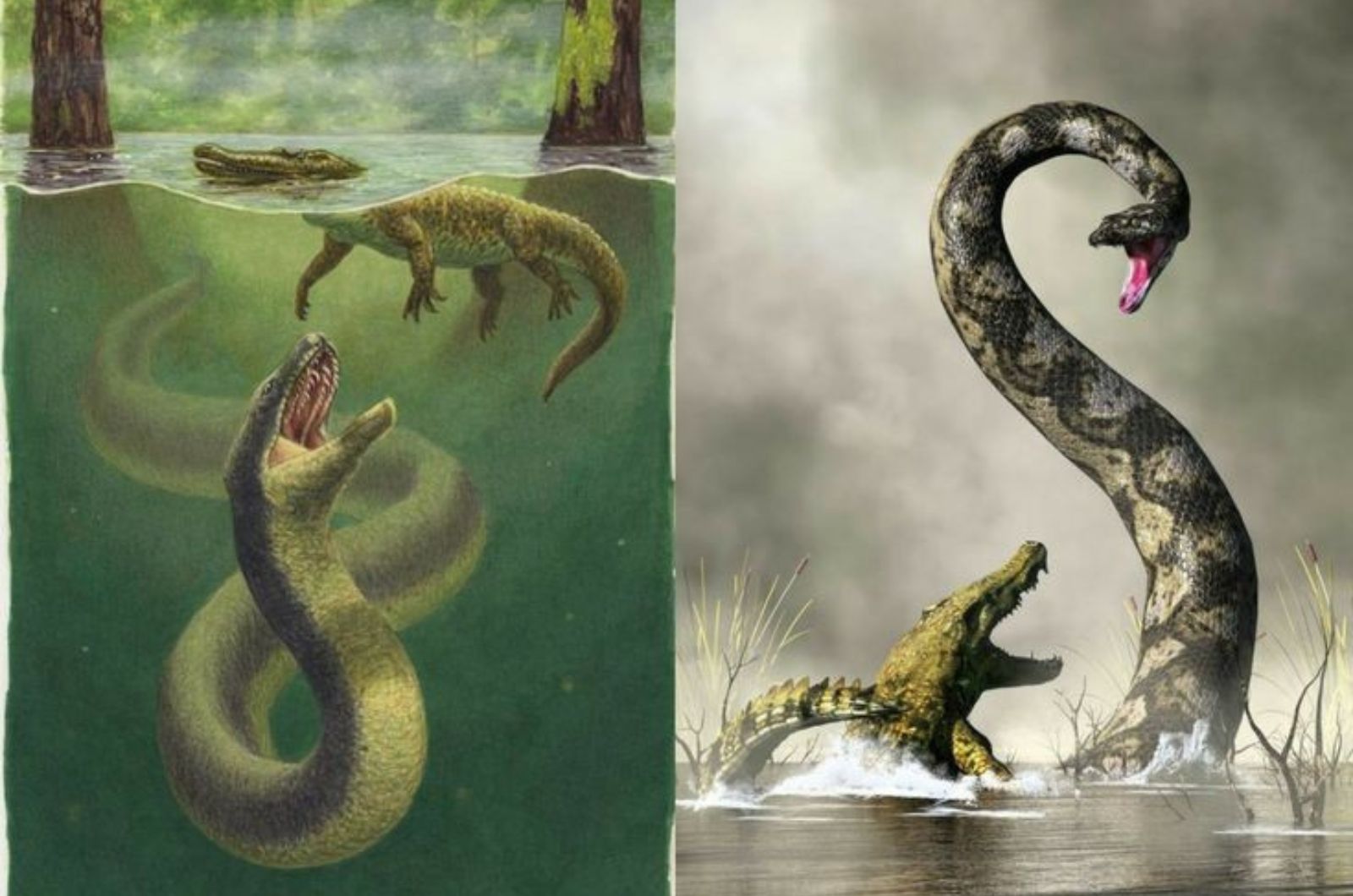
The Titanoboa was a colossal snake that lived around 60 million years ago, shortly after the dinosaurs went extinct. Stretching over 40 feet in length and weighing more than 2,500 pounds, this serpent prowled the warm swamps of South America.
It likely crushed its prey with overwhelming force, much like modern constrictors. The thought of such a massive snake slithering through the wild is the stuff of nightmares.
3. Arthropleura
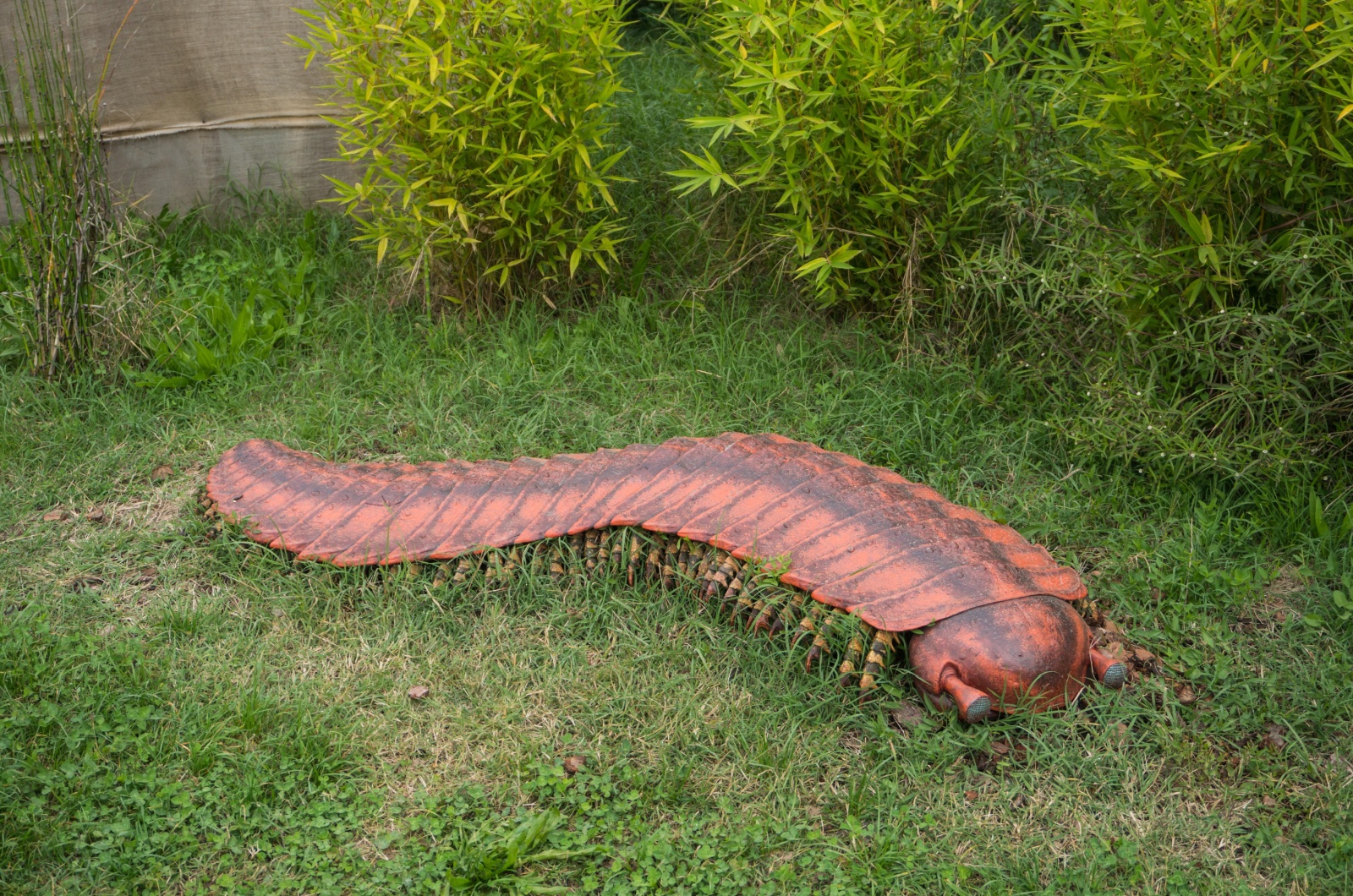
During the Carboniferous period over 300 million years ago, Arthropleura was a giant millipede-like creature that could grow up to 8 feet long, making it the largest known land invertebrate.
This ancient arthropod roamed dense forests, likely feeding on decaying plant material. While it wasn’t a predator, the thought of encountering such a massive, armored insect would be enough to send chills down anyone’s spine.
4. Spinosaurus
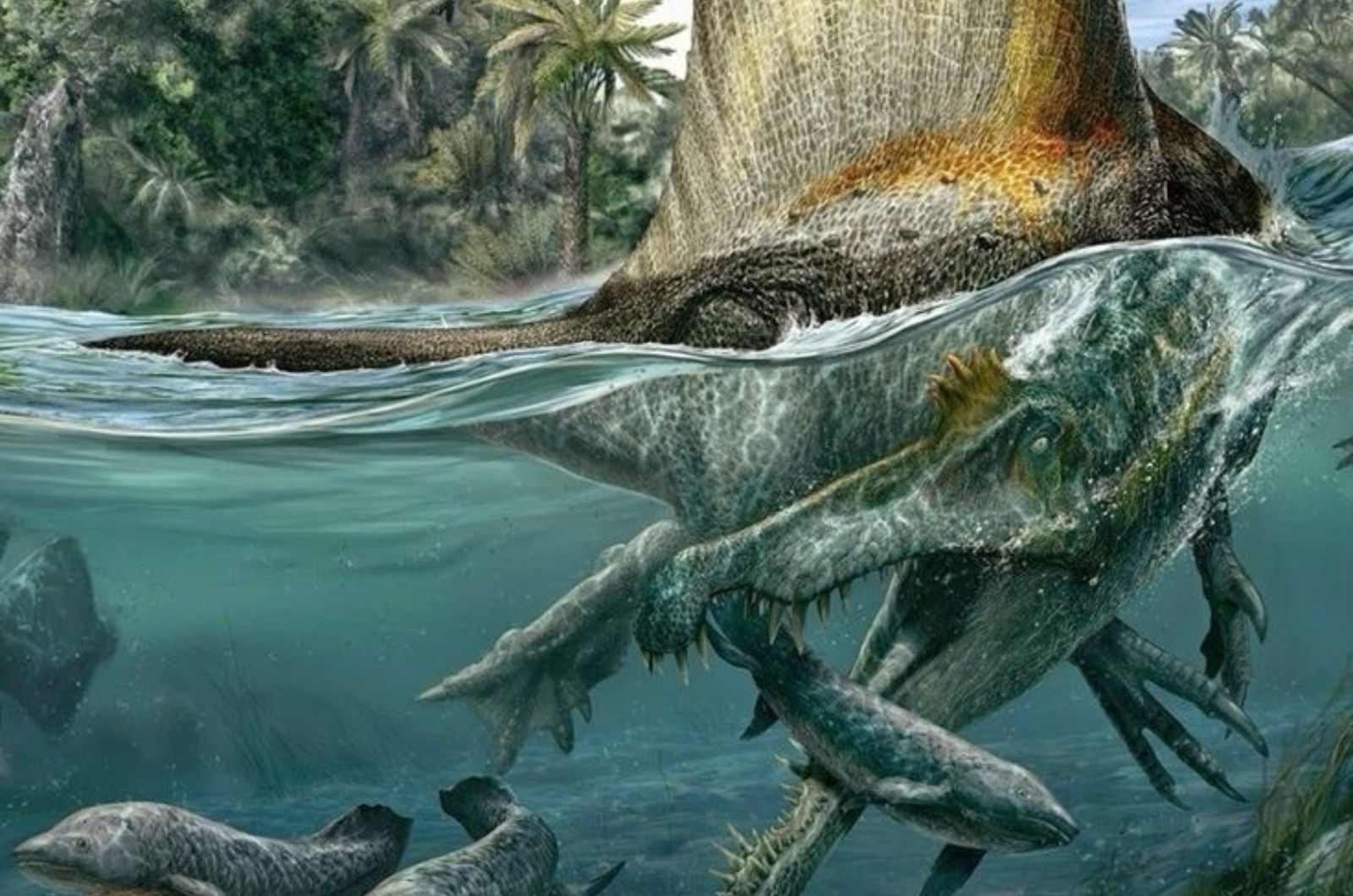
Larger than even the infamous T-Rex, Spinosaurus was one of the most fearsome carnivorous dinosaurs. With its crocodile-like snout and a distinctive sail on its back, it thrived both on land and in water, preying on fish and other dinosaurs.
Measuring up to 50 feet long, its ability to hunt in multiple environments made it a dominant force. Imagine trying to escape a creature that could pursue you both on solid ground and through the water.
5. Jaekelopterus
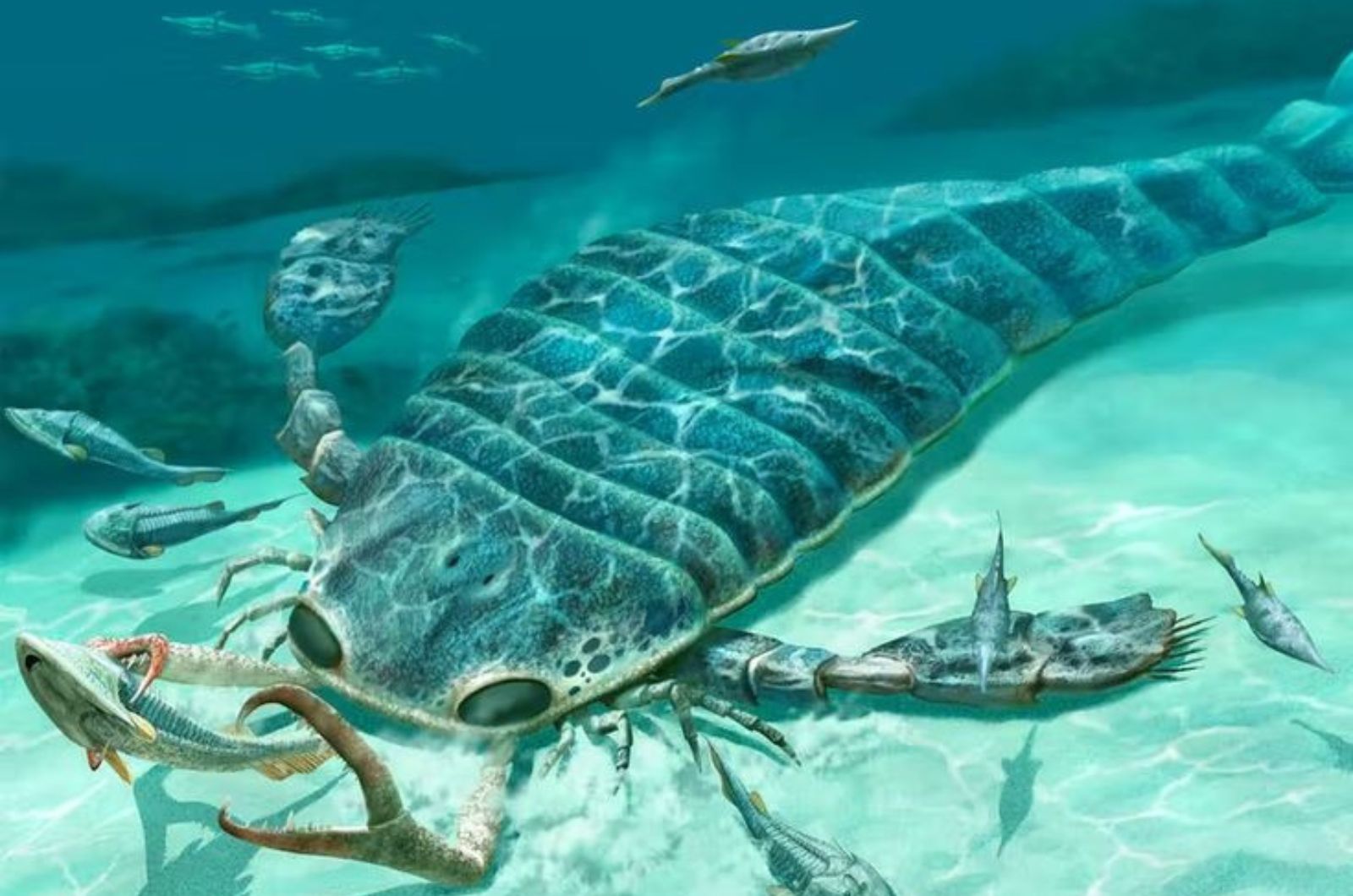
The shallow seas of 390 million years ago were ruled by Jaekelopterus, a giant sea scorpion that reached lengths of up to 8 feet. Its large pincers were formidable weapons, capable of crushing prey with ease.
As an apex predator, it hunted fish and other aquatic creatures with ruthless efficiency. The idea of such an enormous scorpion lurking beneath the water’s surface is enough to make anyone think twice about venturing into prehistoric oceans.
6. Quetzalcoatlus
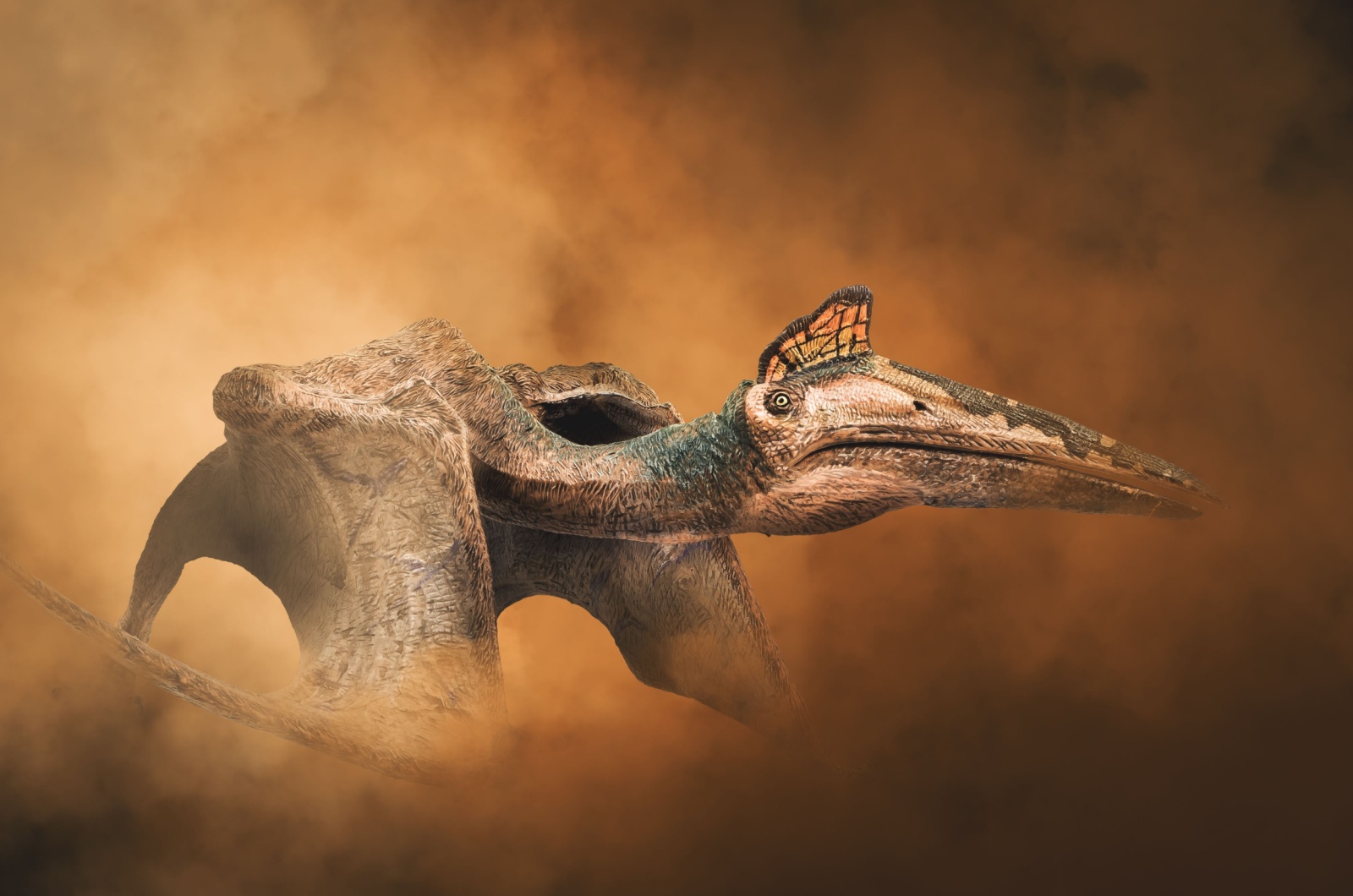
Soaring through ancient skies, Quetzalcoatlus was a pterosaur with a wingspan exceeding 30 feet, making it one of the largest flying creatures ever. Despite its massive size, it was a skilled flyer, gliding over prehistoric landscapes in search of prey.
Likely hunting smaller dinosaurs and marine animals, its sharp beak was a deadly tool. Spotting such an enormous creature overhead would have been as awe-inspiring as it was terrifying.
7. Dunkleosteus
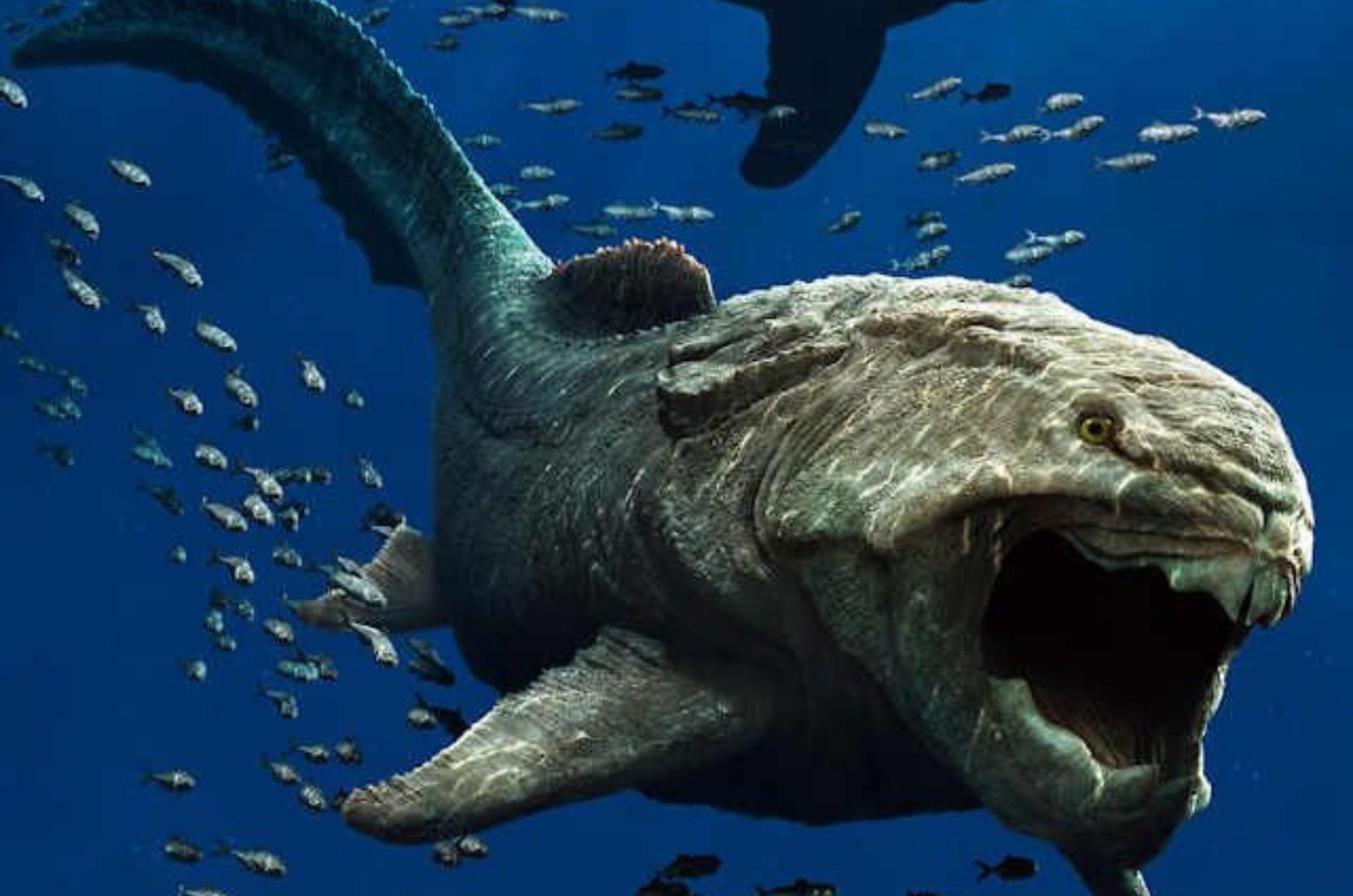
The ancient seas were home to Dunkleosteus, an armored fish that lived 360 million years ago and grew up to 33 feet long. Its bony jawplates acted like sharp blades, effortlessly slicing through flesh and bone.
As a dominant predator, Dunkleosteus preyed on nearly anything it could overpower, and its heavily armored body made it nearly invulnerable to attacks.
Its sheer power and formidable appearance cement its place as one of the most fearsome creatures of its time.
8. Deinosuchus
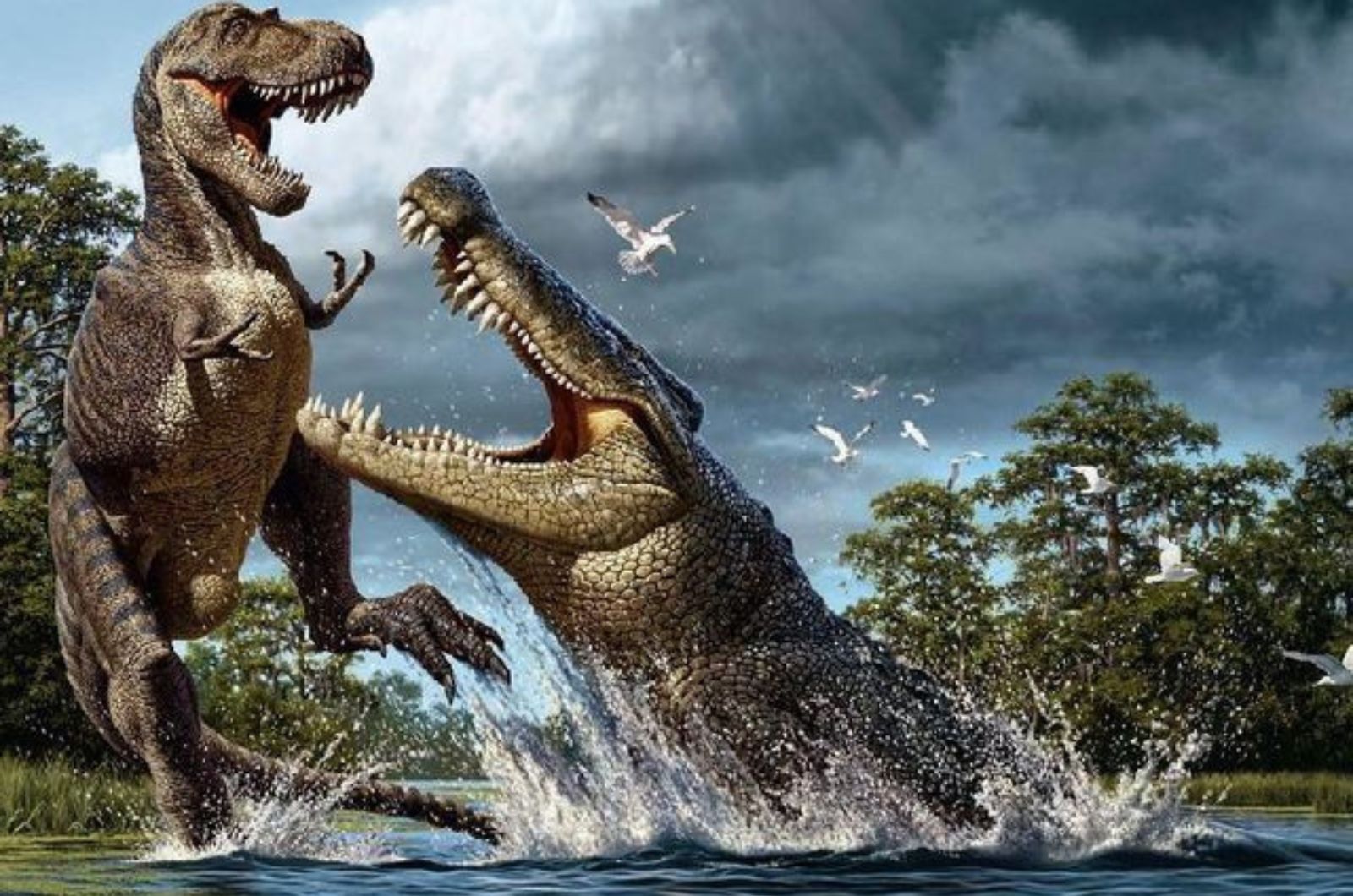
Deinosuchus, meaning “terrible crocodile,” was a prehistoric relative of modern crocodiles but much larger, growing up to 40 feet long.
It lived around 75 million years ago and was capable of taking down large dinosaurs that ventured too close to the water. With its crushing bite force and stealthy hunting style, it was a top predator in its ecosystem.
9. Andrewsarchus
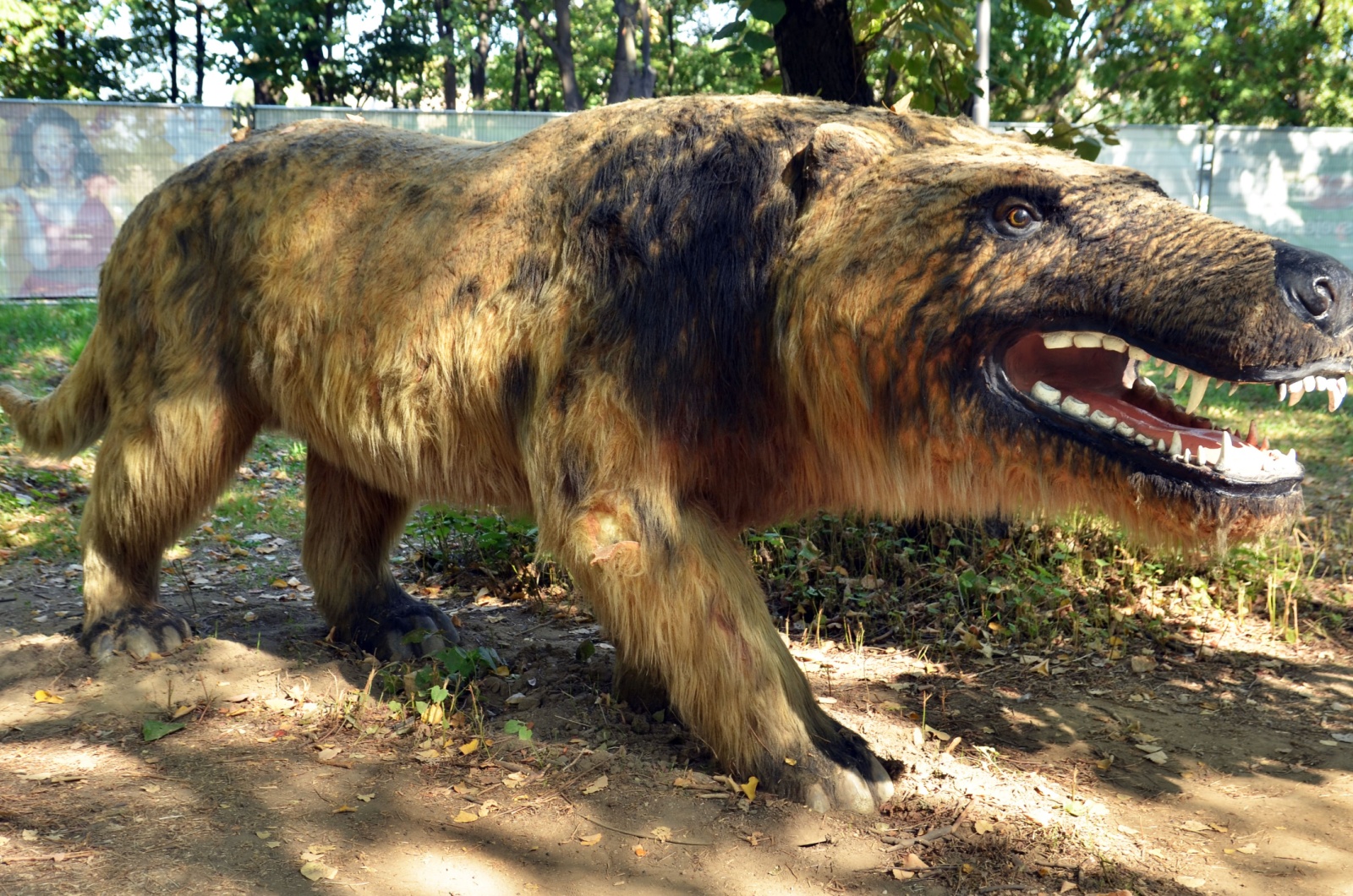
This was a massive, wolf-like carnivorous mammal that lived around 45 million years ago. Its skull alone measured over 3 feet long, and its powerful jaws were perfect for crushing bones.
Andrewsarchus roamed ancient plains, likely scavenging and hunting for prey. Its size and strength made it an apex predator that dominated its environment.
10. Pliosaurus
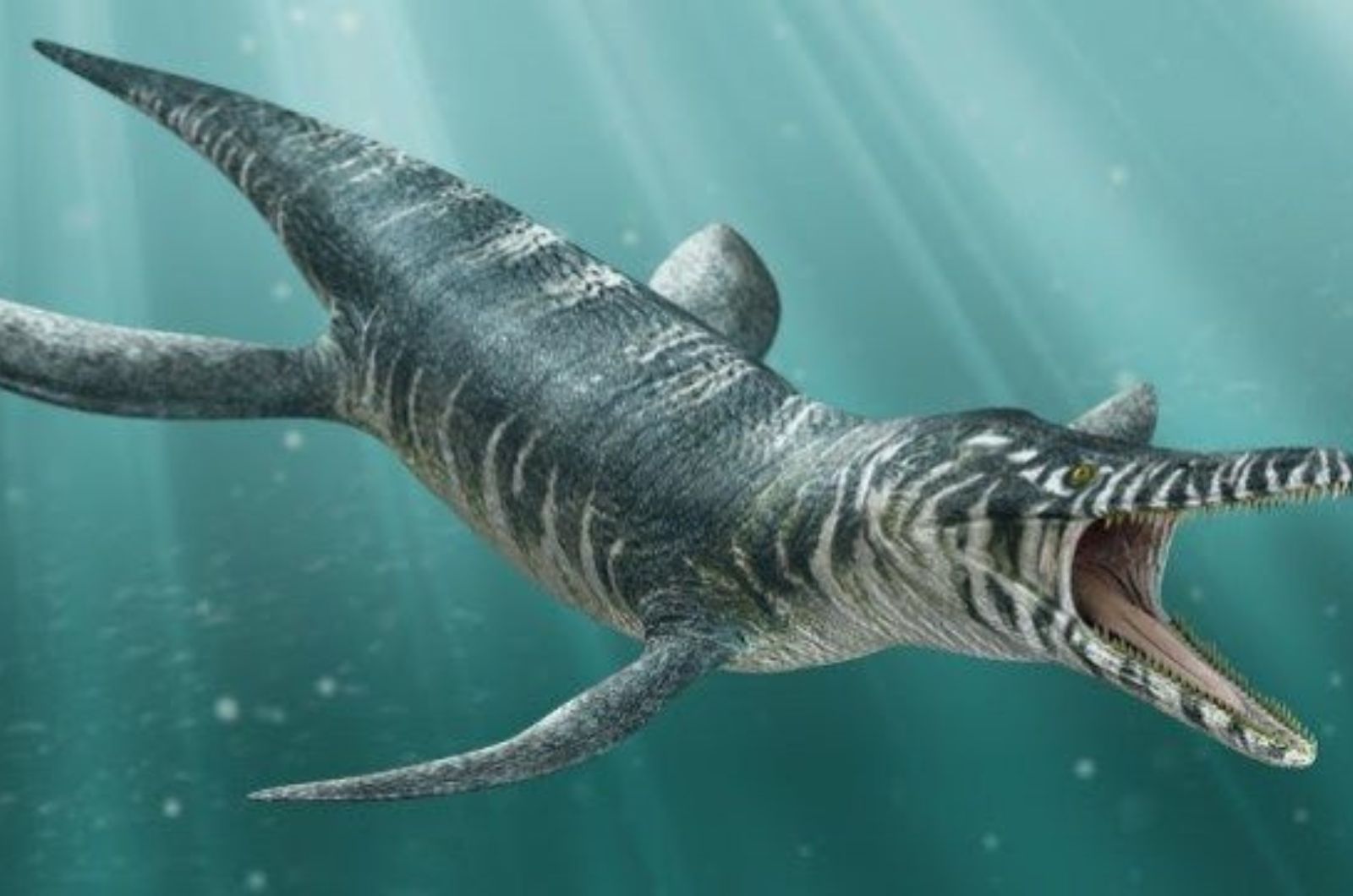
Known as the “sea monster,” Pliosaurus was a marine reptile with a 10-foot-long skull and teeth designed for gripping prey. This massive predator lived during the Jurassic period and could grow up to 40 feet in length.
It hunted large fish, squids, and other marine reptiles. With its powerful jaws and streamlined body, it ruled the ancient seas with ferocity.
11. Sarcosuchus
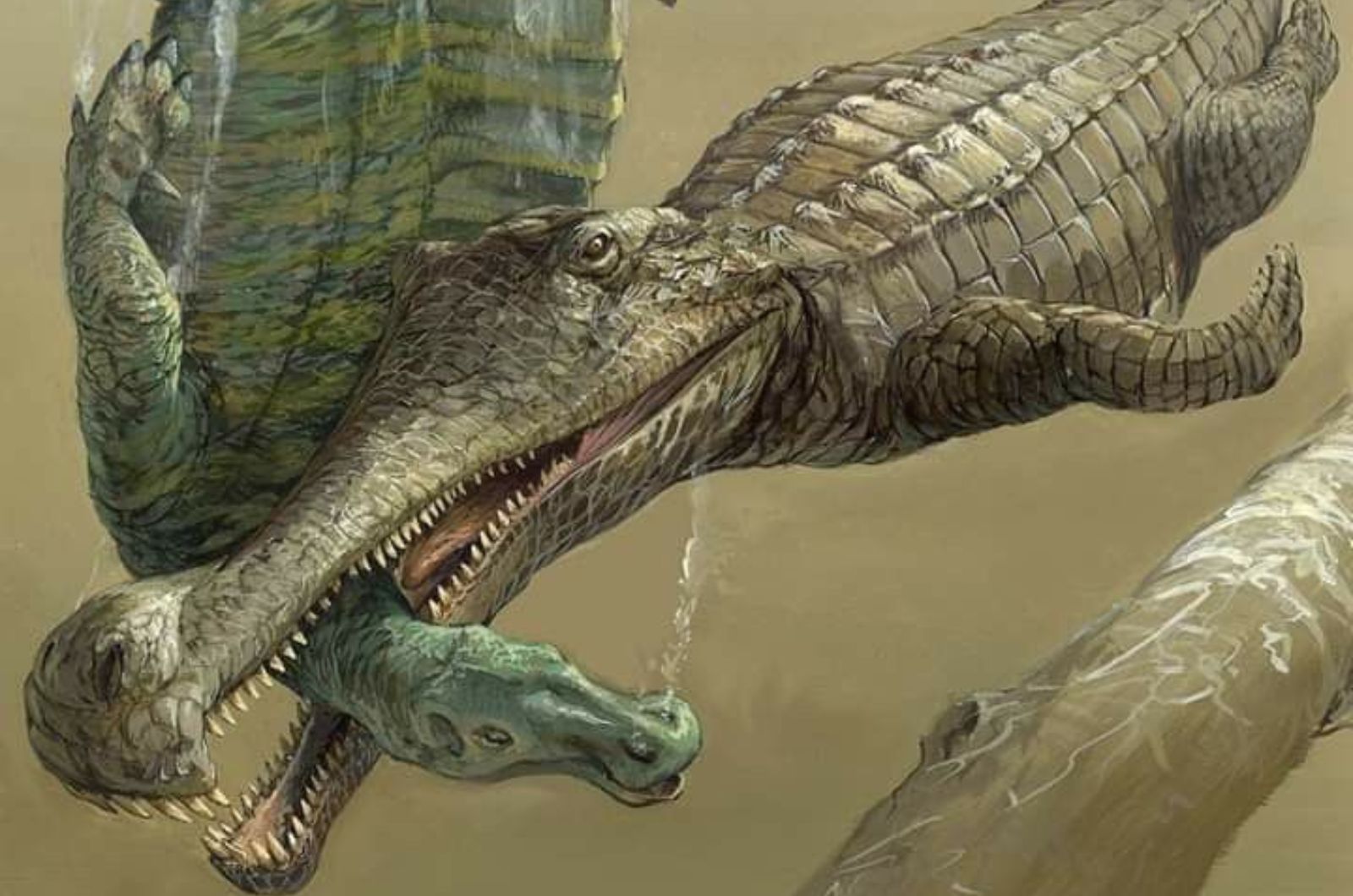
Sarcosuchus, also known as the “SuperCroc,” was a giant relative of modern crocodiles. Measuring up to 40 feet long and weighing several tons, it lived around 112 million years ago.
Sarcosuchus could ambush dinosaurs that came near water sources, using its massive jaws to drag them into the water. Its sheer size and power make it one of the most intimidating reptiles of the prehistoric world.
12. Gorgonopsid
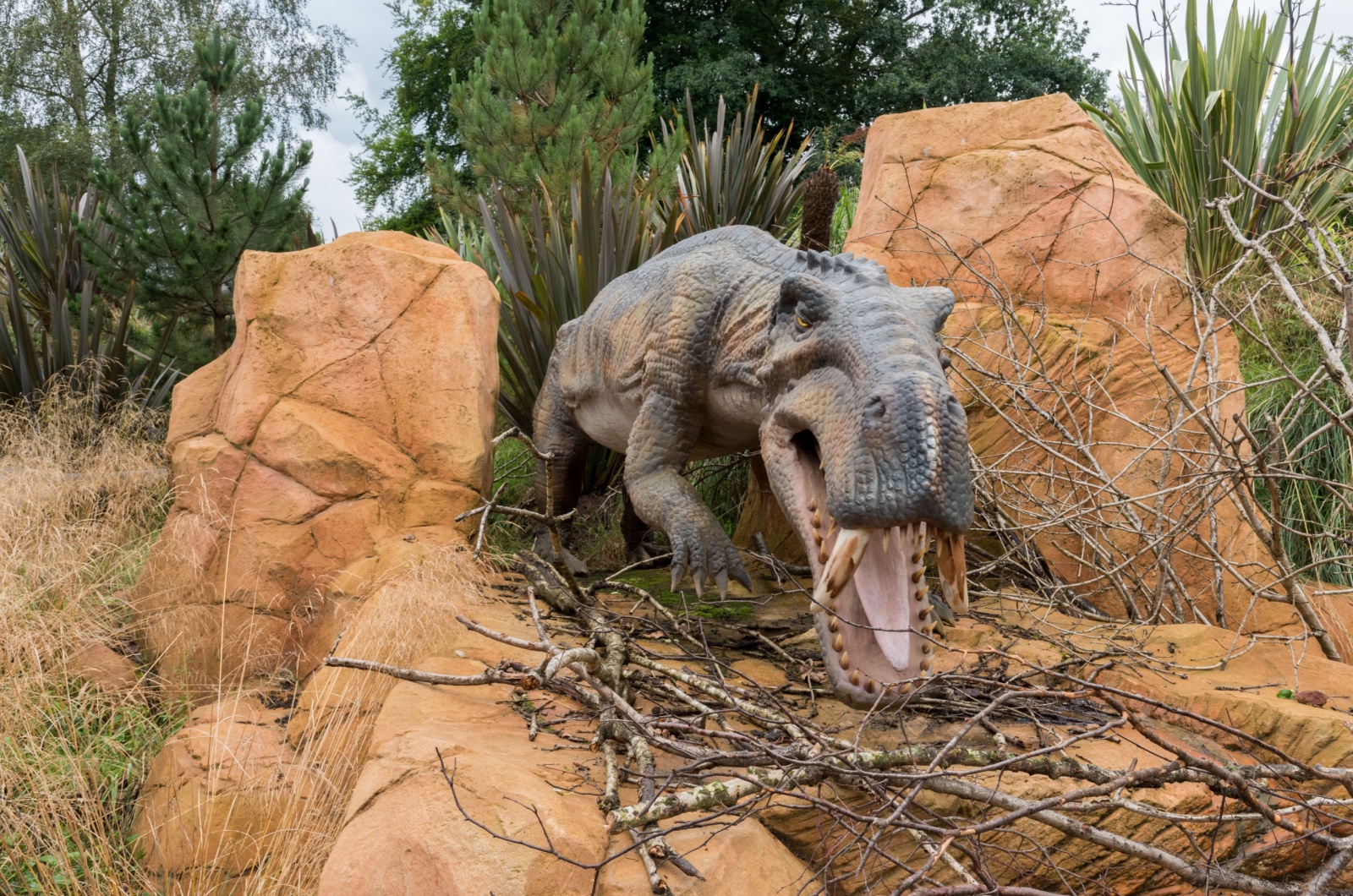
Gorgonopsids were saber-toothed predators that lived before dinosaurs, around 260 million years ago. They had sharp canine teeth and muscular bodies, allowing them to take down large prey with ease.
Despite their reptilian appearance, they were more closely related to mammals. Gorgonopsids were fast and aggressive hunters, striking fear into their prey.
13. Therizinosaurus
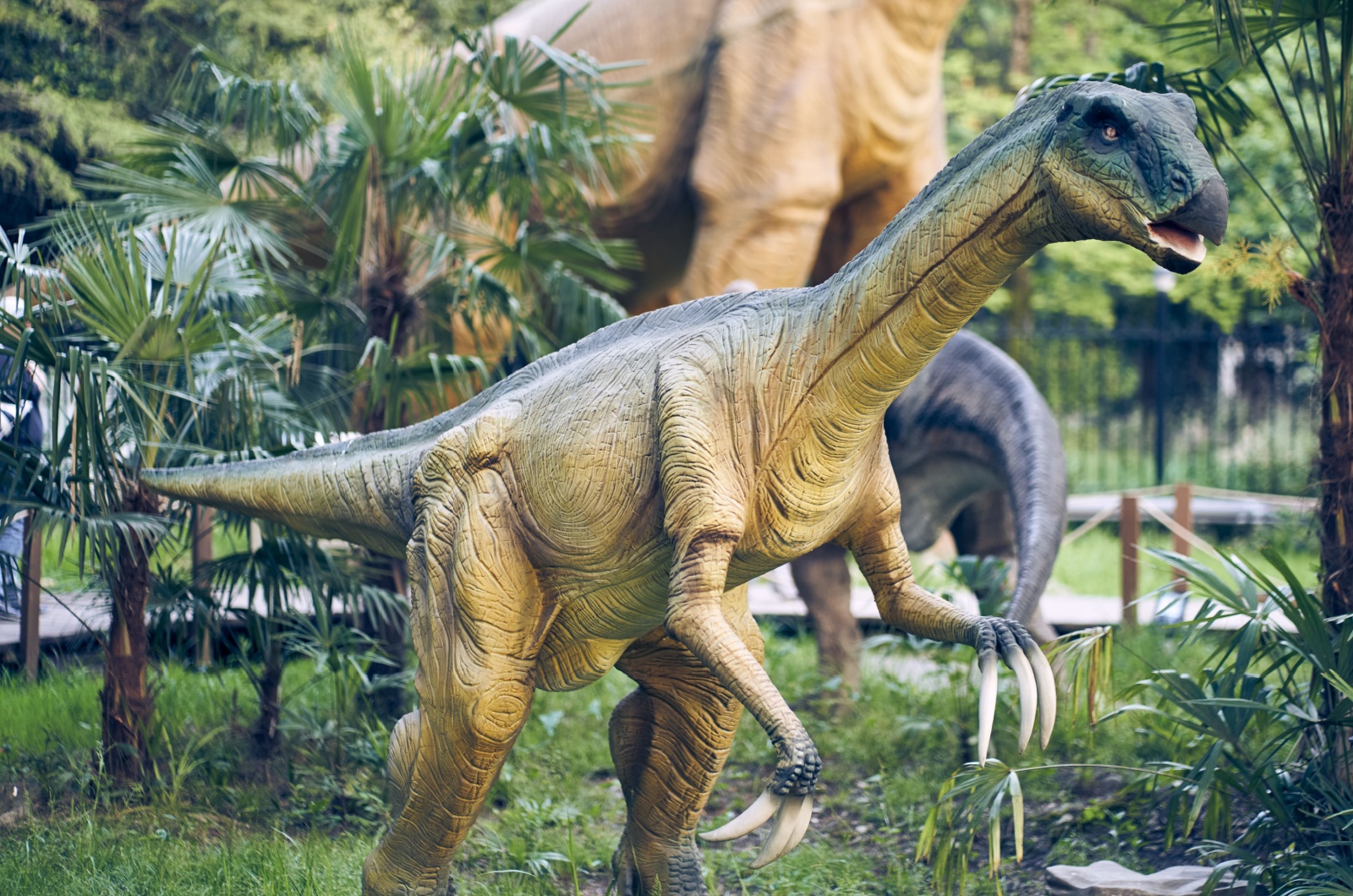
Therizinosaurus was a dinosaur with long, scythe-like claws measuring over 3 feet. Although it was herbivorous, its claws were likely used for defense or foraging.
Standing over 15 feet tall, it had an intimidating presence that would have scared off most predators. Its unusual appearance and massive size make it one of the strangest and most terrifying creatures of its time.
14. Megalania
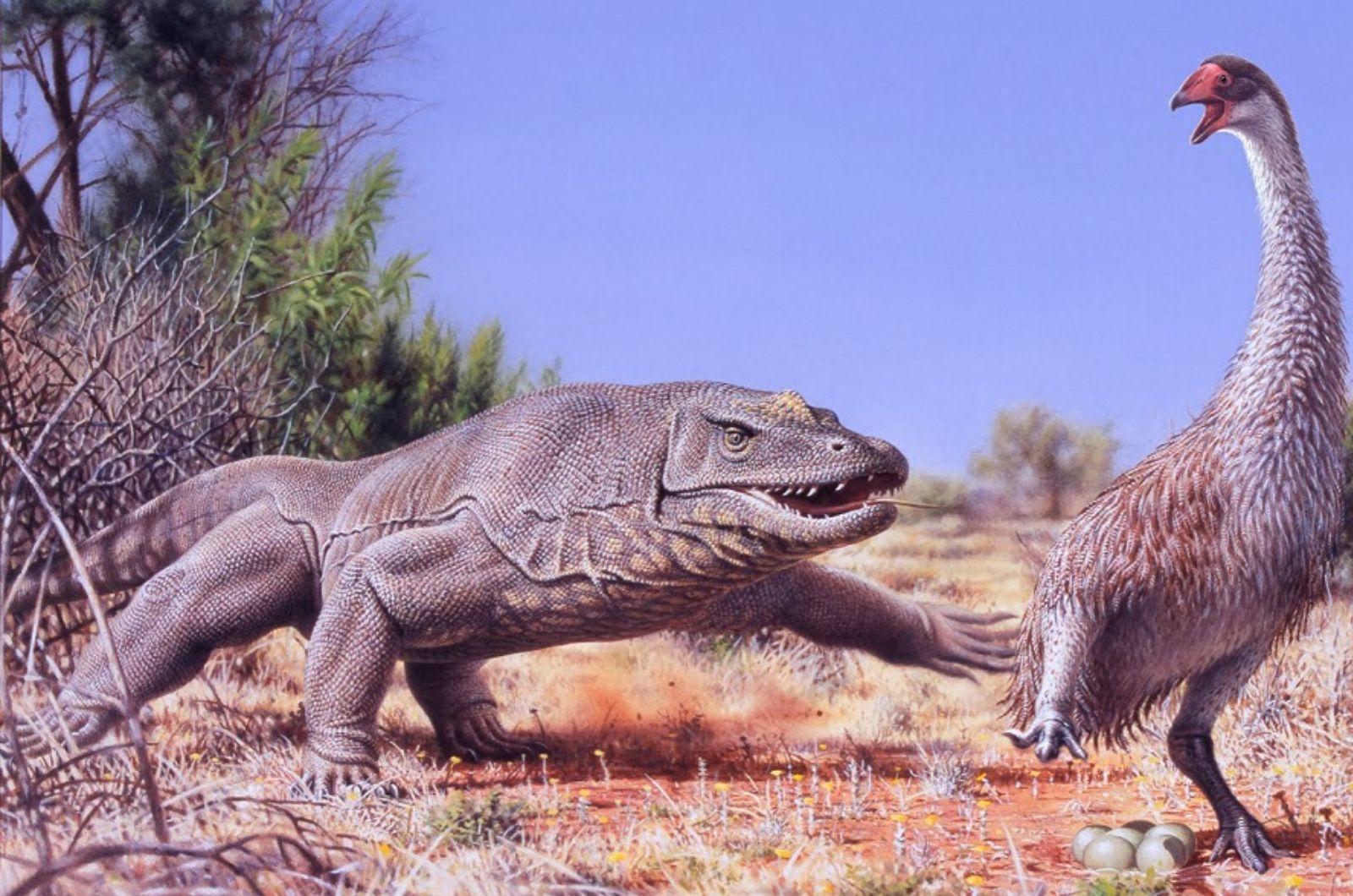
Credit: Mythology
Megalania, a giant monitor lizard from Pleistocene Australia, went extinct around 50,000 years ago, coinciding with the arrival of humans in the region.
Measuring up to 23 feet long and weighing over 2,000 pounds, Megalania was the largest terrestrial lizard ever known. Its size alone made it a top predator, but it was also likely venomous, with powerful jaws capable of delivering a deadly bite.
Megalania hunted large prey, including early megafauna, and its presence would have been a constant threat to both animals and early humans. Its massive size and predatory nature made it a terrifying apex predator of ancient Australia.
15. Helicoprion
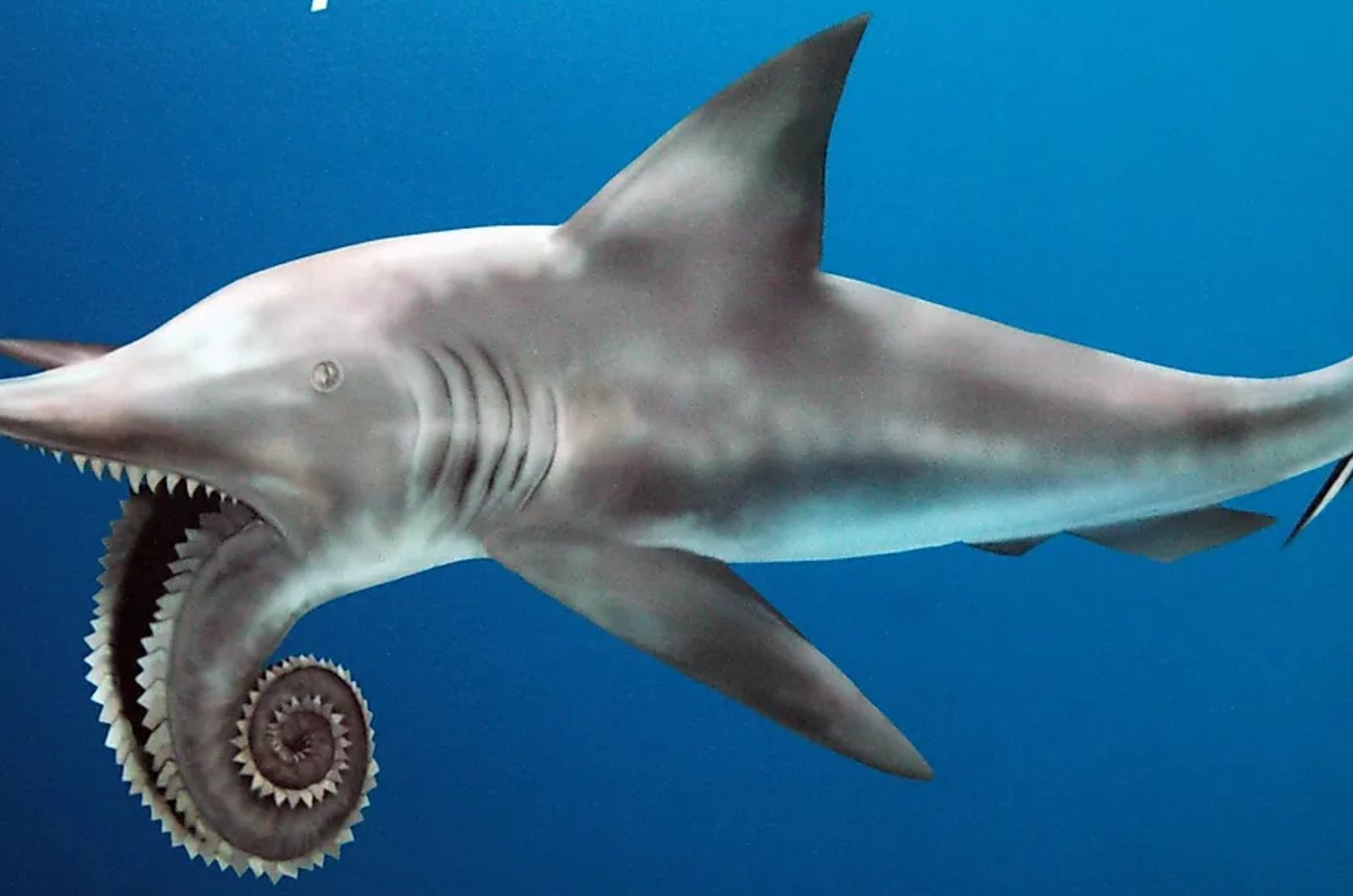
Credit: WorldAtlas
Helicoprion was a prehistoric shark-like fish that lived during the late Carboniferous to the early Permian period, approximately 290 to 250 million years ago.
Its most terrifying feature was its bizarre spiral jaw filled with sharp, serrated teeth, which resembled a buzz saw. This jaw structure allowed Helicoprion to slice through prey like squid and soft-bodied marine creatures with frightening efficiency.
Its intimidating appearance and specialized hunting adaptations made it one of the most formidable predators of its time. Helicoprion went extinct during the Permian mass extinction, the largest extinction event in Earth’s history.

